A handsome adult, coming and going, from and to, the Carrizo Plain burrow complex the cam trap was set near.
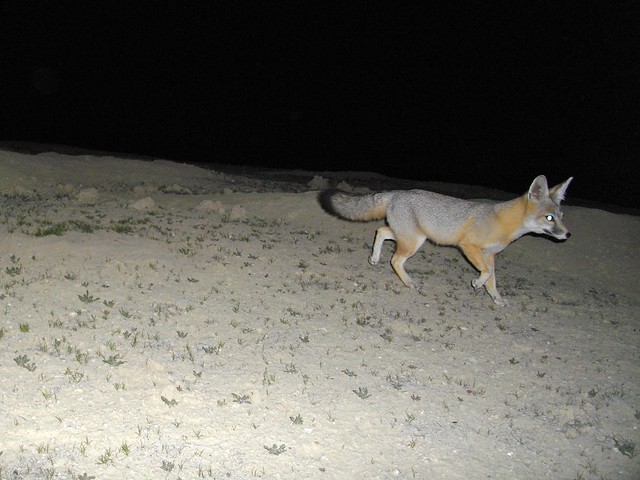
But on night 3, and thereafter, a second and third started popping up, proving that the timing of our CDFW bio-bud Craig couldn't have been better.
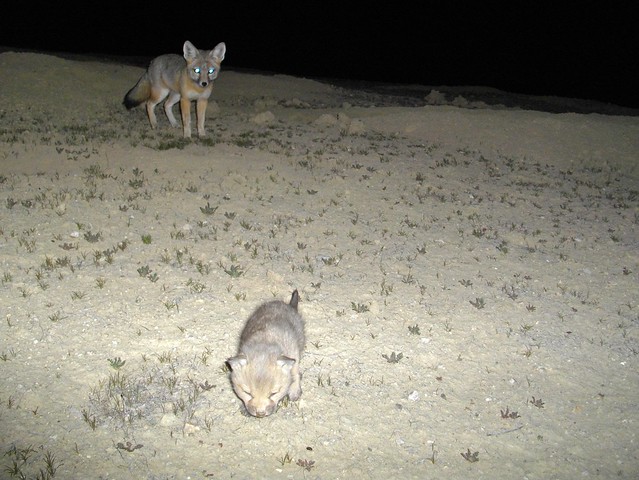

A pup, with Mom in hot pursuit.
But only 1 pup. No more ever emerged from the den, if there had been any.
Which shows how tough a year it has been on the Carrizo Plain and southern San Joaquin Valley. An area that Twisselmann perfectly described in his Flora:
"...the climate of the region can be summarized as very dry, with fog and rather concentrated winter rainfall preventing the formation of a true desert."
And this past winter there weren't any concentrated rainfalls.
As you can see from this photo of the burrow mounds 'n surrounds taken on March 21st, when we set the cams for this study:
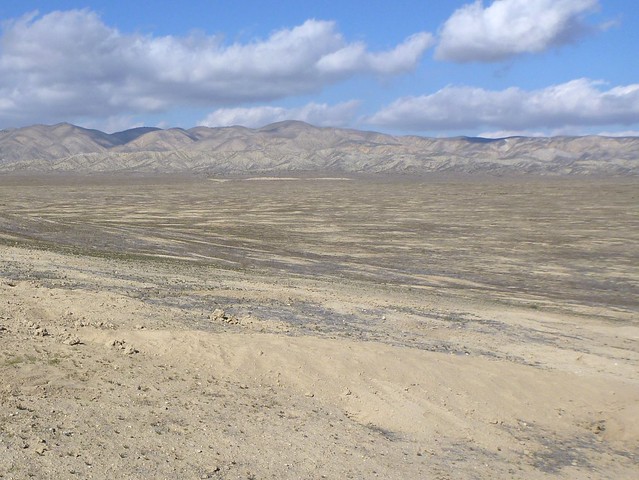
A true desert.
A concept well proven by the excellent work of David J. Germano of California State University Bakersfield (along with friends) in the paper "The San Joaquin Desert of California: Ecologically Misunderstood and Overlooked."
But deserts are also the true native habitat of the kit fox - a species deeply tied to the arid, open lands of the southwest, and their loose sandy soils and prolific Rodentia.
Which the cat-size foxes don't seem to have a hard time finding, even in drought years.
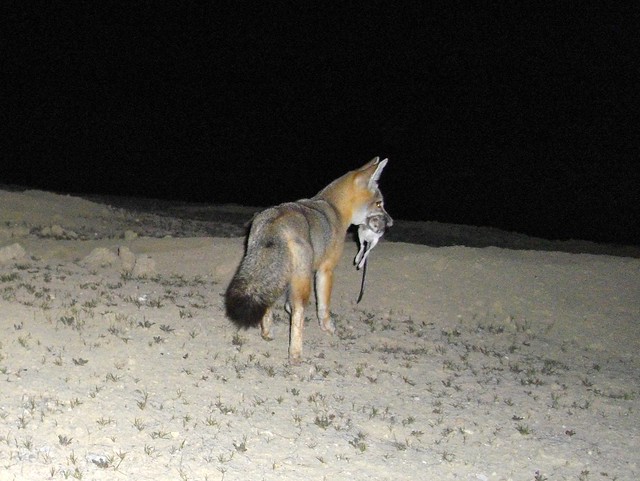
But I expect that's because the bold little seed storing kangaroo rats are all over the place - even hopping around the den complex of the kit fox family:
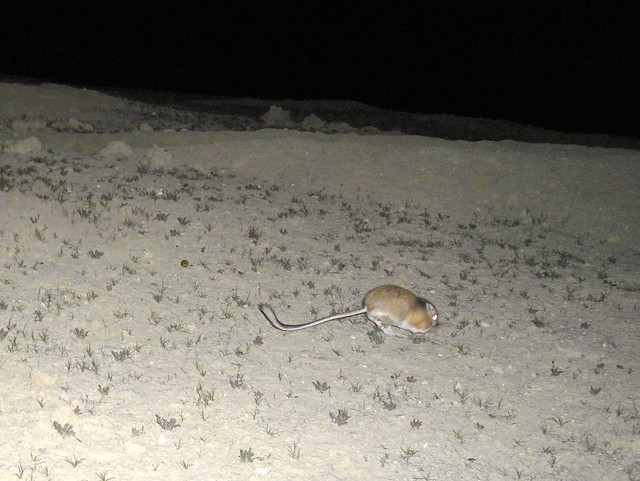

Small (baby?) desert cottontails are also on the menu, but jackrabbits are not commonly chased unless they can be ambushed, or other fare is rare. About 6lbs in weight, an adult bt jack is pretty much the same size as an adult kit fox, making them a risky treat.


But k-rats are by far the most common prey. And, in this case, not just any ole species, either.
These are Giant Kangaroo Rats.

Meaning that what we have here is an ESA two-fer. The Giant Kangaroo Rat, Dipodomys ingens, and San Joaquin Kit Fox, Vulpes macrotis mutica, are both Federally listed Endangered Species.
But the dependence on the giant k-rat by the SJ kit fox is one reason it's listed, so the kit fox has the proper "collection" permit. :)
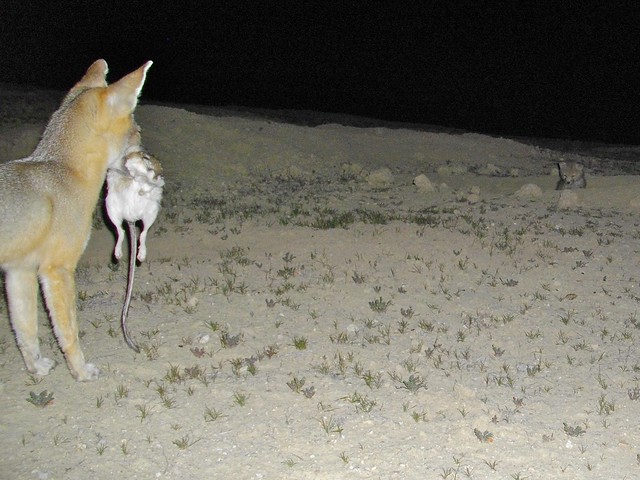
So if there are all these k-rats still around on a drought year, why only 1 pup?
Kit foxes typically have 2-5. And this wasn't an isolated case. Most of the kit fox families under study had 0-2 pups this season.
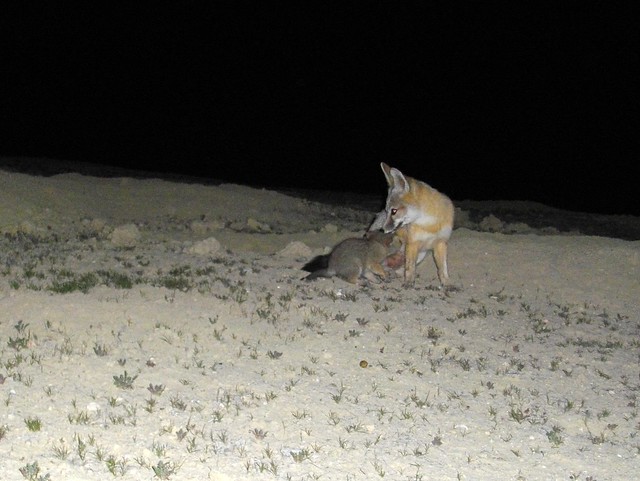
It's a good question. And one without full answers. But there are solid theories. And Mom's lactation may play a role. Lactation levels needed to support 2-5 pups might require forage other than just k-rats. Forage in poor supply in drought years. Or, perhaps, other nutritional triggers "predict" the season earlier in the year and limit lactation as a way to thin litter size. Hmmmm...
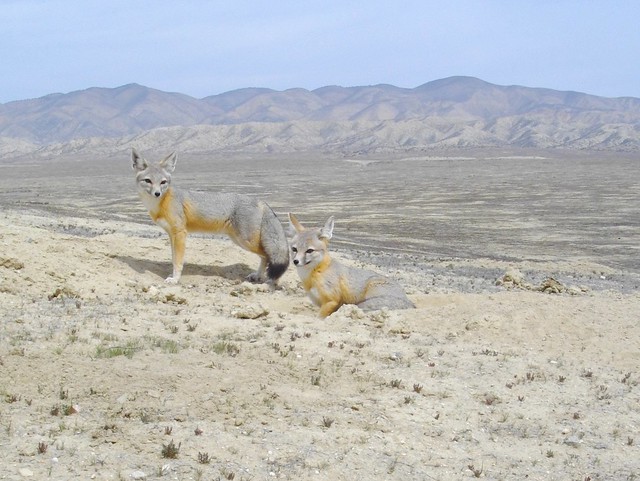
Along with food, another parental role is protection. Which for kit foxes, means choosing a safe location and always staying vigilant for intruders, such as coyotes.
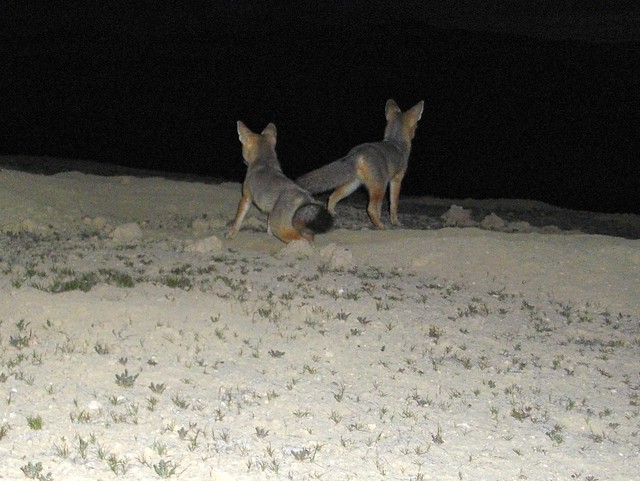
Having both parents around really helps with that as well.
They team up, share roles.
One sleeps, while the other acts as lookout.
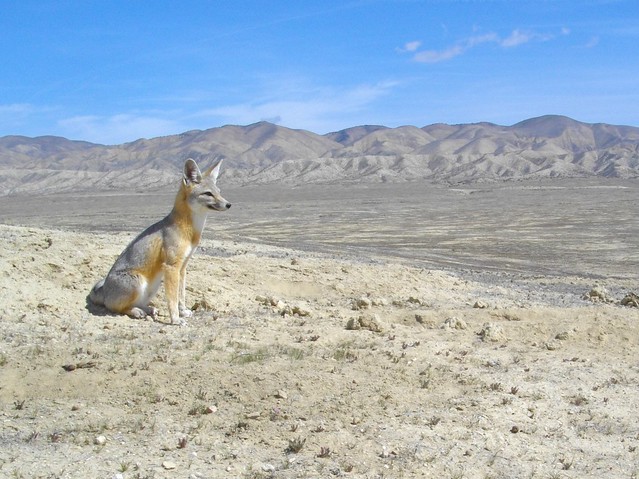
Or one hunts, while the other pupsits.
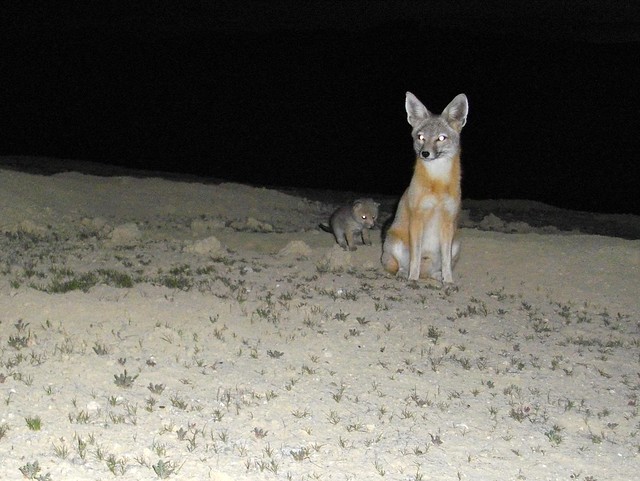

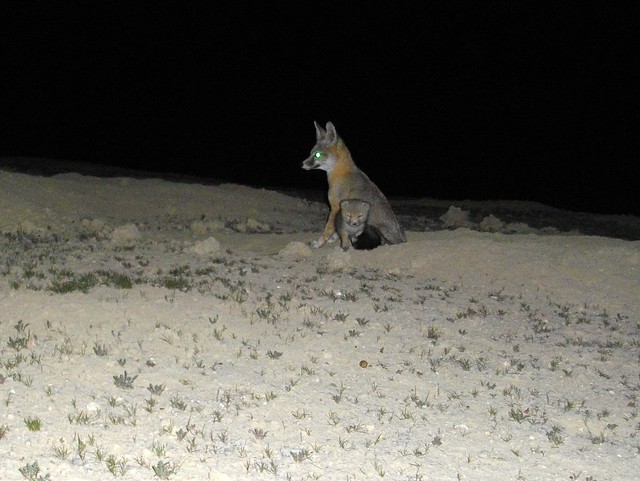


So, let's see how we're doing so far...
Shelter: check
Food: check
Security: check
And week 1 done of the pup above ground.
What's next for our fine kit fox family?
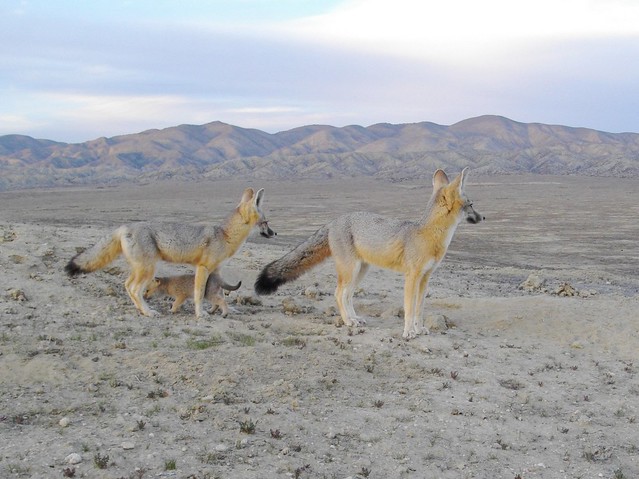
Stay tuned.
Editor's note: this was post 1 of 3 of this kit fox family. The other two posts are here:
====
References:
- The Wasmann Journal of Biology, Vol 14, 1956 - Ernest C. Twisselmann - A Flora of the Temblor Range and the Neighboring Part of the San Joaquin Valley
- Natural Areas Journal, Vol 31, 2011 - David J. Germano, Department of Biology, California State University Bakersfield - The San Joaquin Desert of California: Ecologically Misunderstood and Overlooked
- CSU Stanislaus Endangered Species Recovery Program - San Joaquin Kit Fox
- CSU Stanislaus Endangered Species Recovery Program - Recovery Plan for San Joaquin Kit Fox
- CSU Stanislaus Endangered Species Recovery Program - Giant Kangaroo Rat

Amazing set of photos! What a fun treat to spy on a week in the life of the Kit Fox fam.
ReplyDeleteAwesome photos! I've been to Carrizo twice in the last 10 years and never saw any kit foxes - I'm sure they're elusive and predominately nocturnal, no? Pronghorns, Sandhill Cranes, and an immature bald eagle were my most memorable critter sightings. That K-rat is one corpulent rodent! We have Merriam's here on our property and they are quite small in comparison.
ReplyDeleteThanks camissonia. Yes, they're quite secretive and almost totally nocturnal. They will come out during the day on occasion though, especially cloudy ones. The eagles are one reason why - the little cat-size kit fox is one of their targets.
DeleteAbsolutely stunning sequence of pictures. It's almost like they're trained to be photogenic!
ReplyDeleteWhat incredible photos showing intimate moments in the life of some elusive and rare animals. I especially love the shot with the jackrabbit in the background. The daylight photos are really beautiful as well.
ReplyDeleteI have only had a few brief glimpses of Kit Foxes.
Great pics, RT. They sure are beauties. The video footage I'm working on just doesn't do justice to the foxes coloration or the desolate charm of the setting.
ReplyDeleteThanks Codge. I'm looking forward to seeing some of your footage of them. High res stills do show details and colors well, and can be quite picturesque, but video can give such a great sense of their movements and behavior. Guess it just goes to show that we need to keep doing both!
DeleteThanks all. I definitely got lucky on this set.
ReplyDeleteFabulous!
ReplyDeleteExcellent series, and such beautiful colors in the daylight shots. Looking forward to seeing what's next.
ReplyDelete